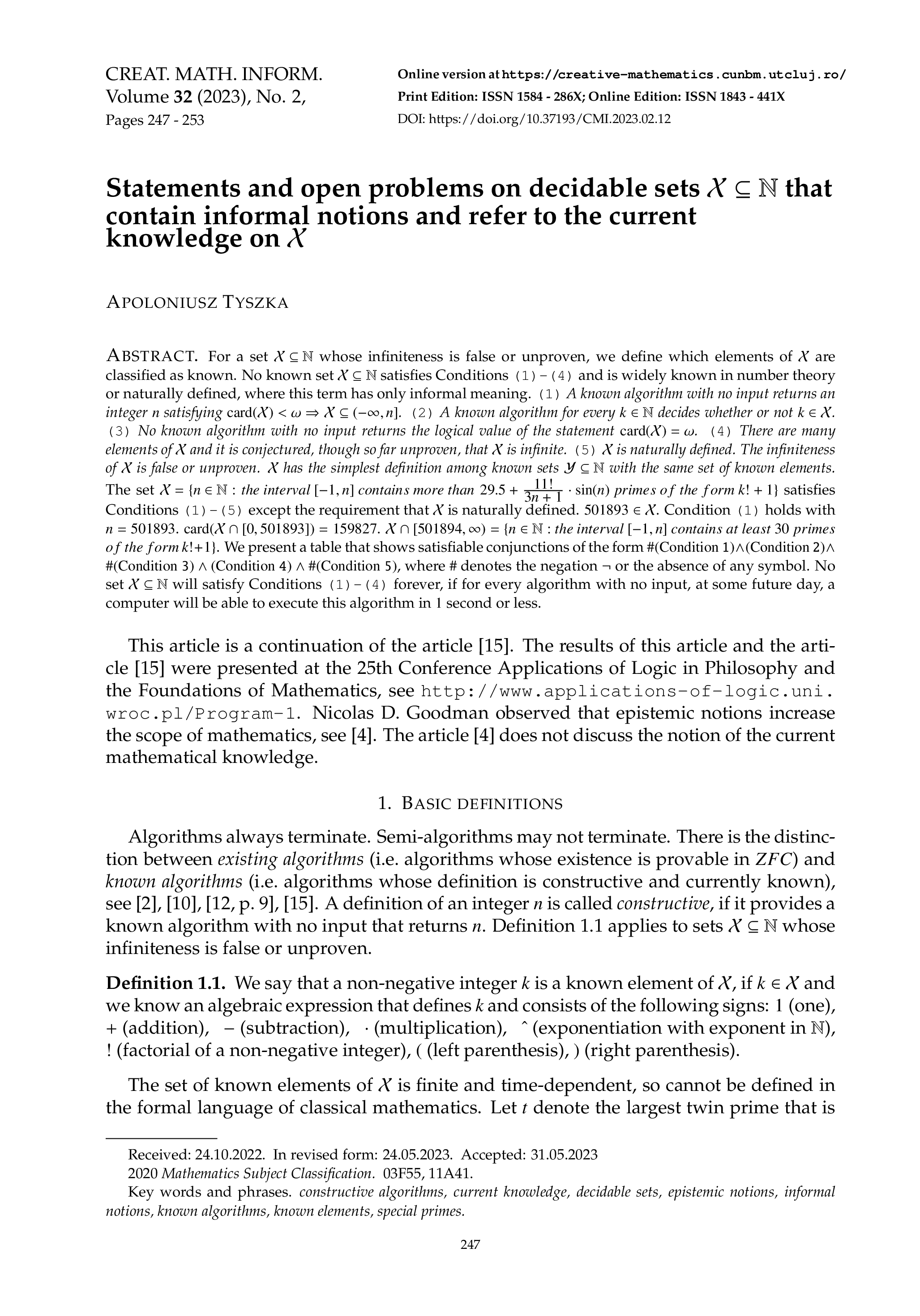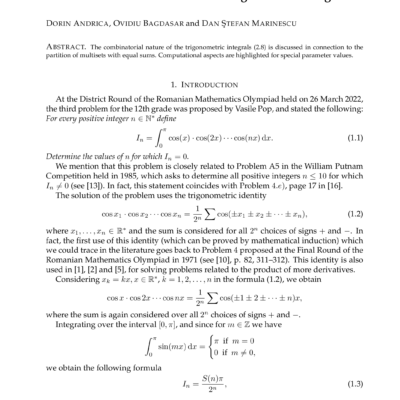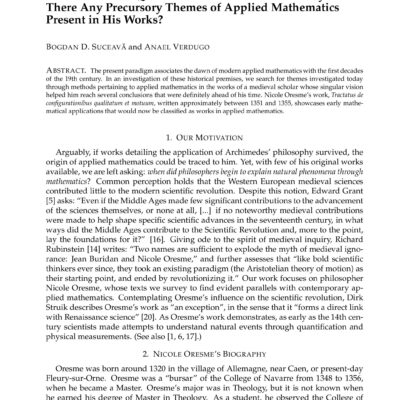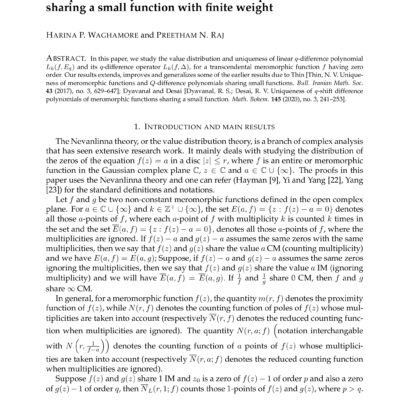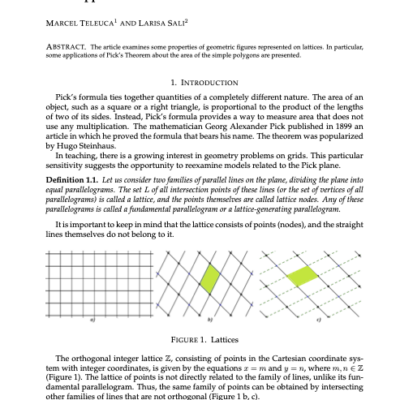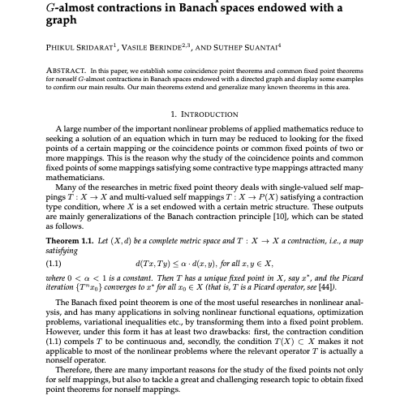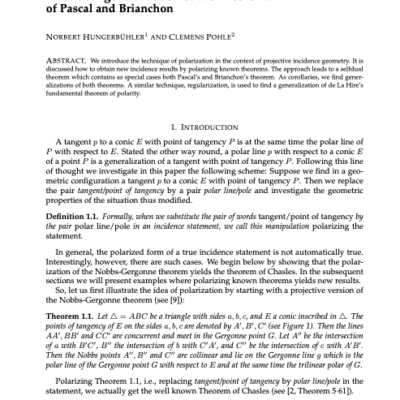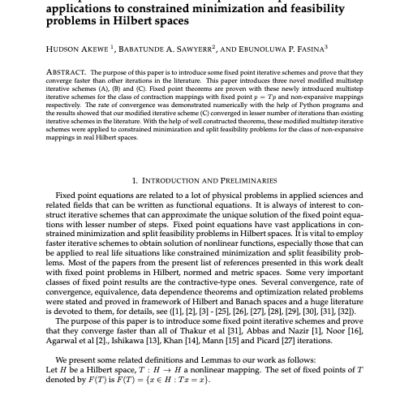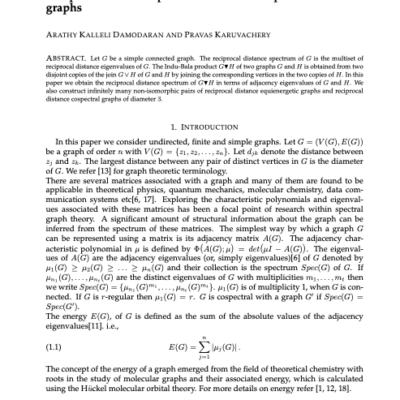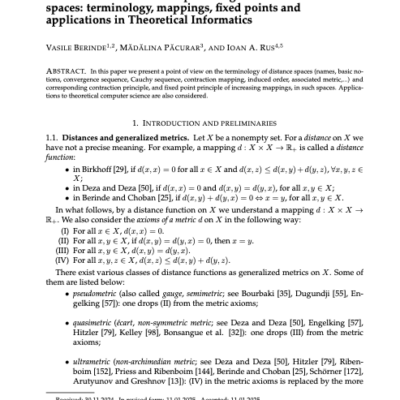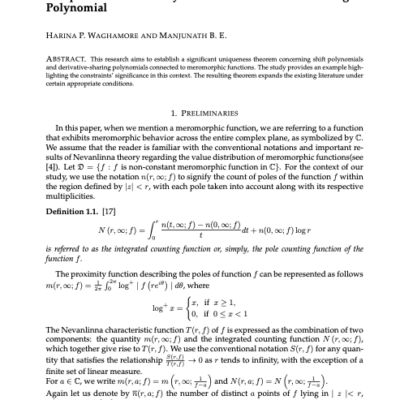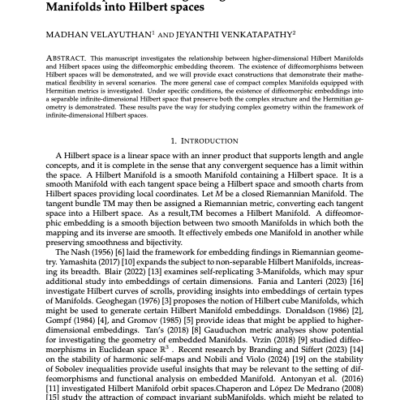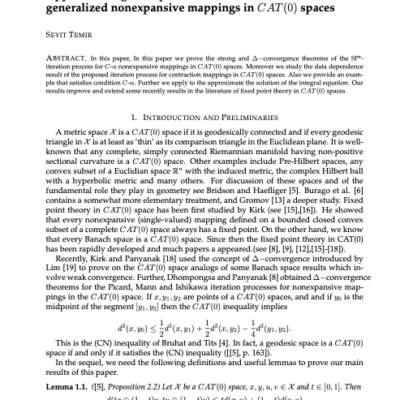For a set ![]() whose infiniteness is false or unproven, we define which elements of
whose infiniteness is false or unproven, we define which elements of ![]() are classified as known. No known set
are classified as known. No known set ![]() satisfies Conditions~ (1)-(4) and is widely known in number theory or naturally defined, where this term has only informal meaning.
satisfies Conditions~ (1)-(4) and is widely known in number theory or naturally defined, where this term has only informal meaning.
(1)~A~known algorithm with no input returns an integer ![]() satisfying
satisfying
![]()
![]() .
.
(2)~A~known algorithm for every \mbox{![]() } decides whether or not
} decides whether or not ![]() .
.
(3)~No known algorithm with no input returns the logical value of the statement ![]() .
.
(4)~There are many elements of~![]() and it is conjectured, though so far unproven, that
and it is conjectured, though so far unproven, that ![]() is infinite.
is infinite.
(5) ![]() is naturally defined. The infiniteness of
is naturally defined. The infiniteness of ![]() is false or unproven.
is false or unproven.
![]() has the simplest definition among known sets
has the simplest definition among known sets ![]() with the same set of known elements.
with the same set of known elements.
The set ![]()
![]()
![]()
satisfies Conditions~(1)-(5) except the requirement that ![]() is naturally defined.
is naturally defined. ![]() . Condition~{\tt (1)} holds with
. Condition~{\tt (1)} holds with ![]() .
. ![]() .
. ![]()
![]()
![]()
![]()
![]()
![]()
![]()
![]()
![]()
![]()
![]()
![]()
![]() . We present a table that shows satisfiable conjunctions of the form
. We present a table that shows satisfiable conjunctions of the form ![]()
![]() , where
, where ![]() denotes the negation
denotes the negation ![]() or the absence of any symbol.
or the absence of any symbol.
No set ![]() will satisfy Conditions~ (1)-(4) forever, if for every algorithm with no input,at some future day, a computer will be able to execute this algorithm in
will satisfy Conditions~ (1)-(4) forever, if for every algorithm with no input,at some future day, a computer will be able to execute this algorithm in ![]() ~second or less.
~second or less.

